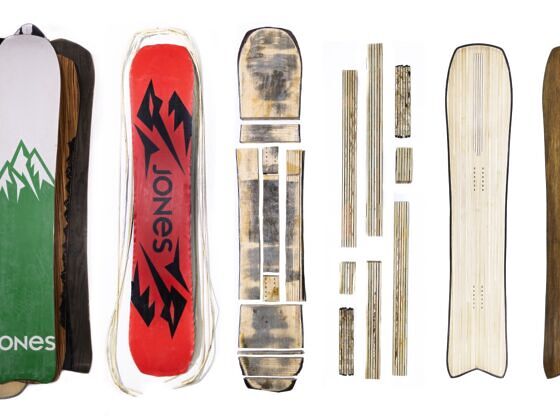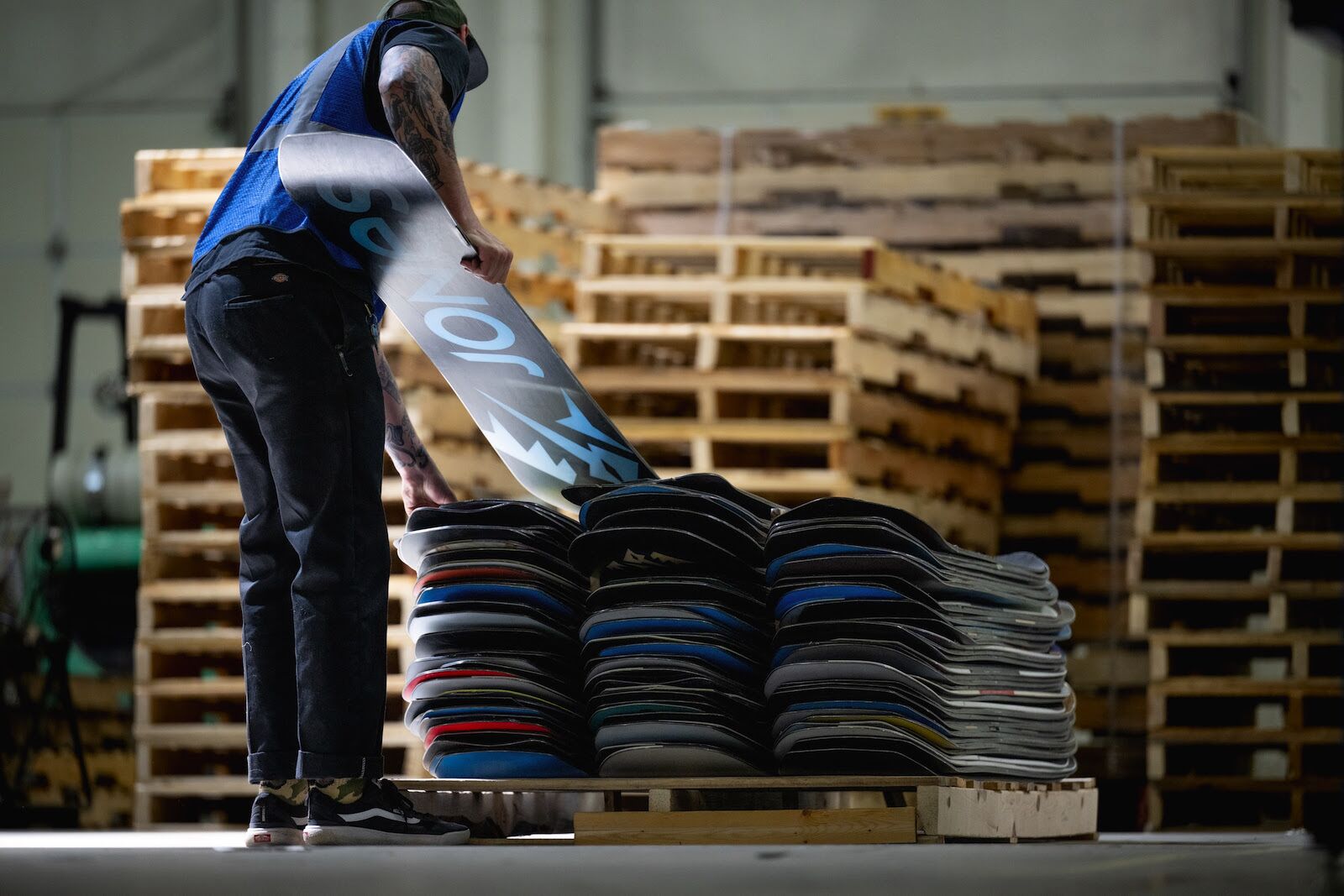For dedicated skiers and snowboarders, there’s clout in building up a “quiver” – a collection of skis or boards, each tailored to different conditions or locations. Thing is, the most common quiver is a collection of beat-up old skis or boards collecting dust in the back of the garage, never to be used again, but held onto either “for rock season” or simply because there’s never been a well-communicated method for responsibly disposing of old ski equipment. The latter ends now, as one prominent snowboard brand has announced a recycling and repurposing program that allow users to ship their old equipment in to be turned into new equipment. It’s called the Re-Up Tech process from Jones Snowboards, founded by iconic pro snowboarder and environmental activist Jeremy Jones.

This Snowboard Company Collects Used Boards For Repurposing Into New Ones
Developed in partnership with SWS Board Technology, Jones’ factory partner, Re-Up Tech prompts snowboarders to send “dead” boards to Jones via jonessnowboards.com, and in return, receive a $50 credit towards the purchase of a new Jones board sold on the company’s website.
“We’re always looking for innovative ways to reduce the impact of our business,” says Jeremy Jones, founder of Jones Snowboards, in a press release. “Re-Up Tech is undoubtedly the most meaningful sustainability accomplishment we’ve ever made. Every board we keep out of the landfill is a win for the planet, and the challenge of recycling skis or snowboards has been a long-standing riddle of our industry that we’re honored to have finally solved.”
How the Re-Up Tech process works

Photo: Jones Snowboards
The efforts aim to drastically reduce the estimated 3 tons of skis and snowboards that hit landfills each year. While waste is a small portion of the roughly 74 kg of CO2 emissions the average skier emits on a ski trip, it’s not inherently addressed by the continued progression and adoption of renewable energy and electric vehicles across the broader economy.
Jones aims to tackle the problem by sending the dead boards it collects to the SMS factory, where the boards’ steel edges are removed and recycled. Then, residue is removed from the boards’ topsheet via sanding before the boards are sent into a hydraulic press to be compacted. Six compacted boards at a time are then processed into “stringer” material that makes up part of the core of new snowboards.
“Traditionally, carbon fiber or another composite fiber stringer is layered on top of a snowboard’s woodcore to help suck up chatter and add pop. In both on-snow and lab tests, Re-Up Tech stringers have proven to absorb vibrations and be more torsionally stable than any stringer material Jones has ever tested,” says Xavier Nidecker, Jones Brand Manager Xavier Nidecker, in the press release. “There are no performance sacrifices in using these upcycled materials. Re-Up Tech stringers are unbelievably strong and damp because of the perpendicular orientation of the material layers relative to the woodcore.”
Similar efforts are happening at specific retail stores including Alpine Base & Edge and Boulder Sports Recycler in Boulder, Colorado, according to the sustainability website Green Matters. Other options include workshops that collect old skis and boards and work them into pieces of furniture or otherwise repurpose the boards, options for which can be found via Green Matters or local business bureaus in ski towns and nearby cities. Skis and boards that are still rideable can be brought to second-hand sports stores including chains like Play It Again Sports or thrift stores.